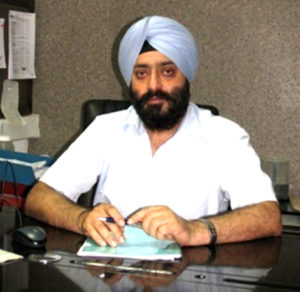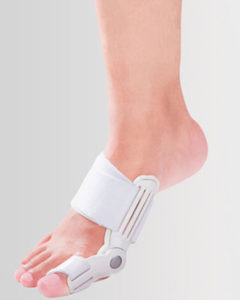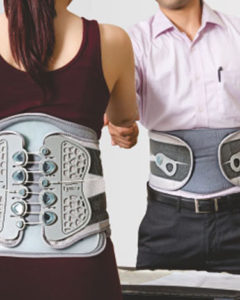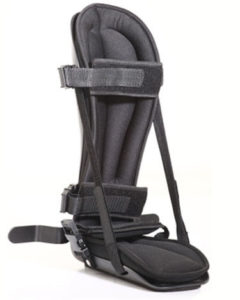Earlier this year, Tynor Orthotics raised Rs. 143 crore from Lighthouse Funds and France-based Thuasne Participations. It is targeting a revenue of Rs. 500 crore over the next five years by increasing its focus on innovation, entering oncology products segment and expanding internationally.

When P J Singh, a Post Graduate from Punjab University in Pharmaceutical Sciences, was a lecturer, he harboured an idea of setting up of a manufacturing unit of medical devices. He conducted an organised market survey in many cities and finalised on “Orthopaedic Appliances”. “These products were either very poor quality if manufactured in India or very expensive if imported, either way they did not serve the needs of the Indian consumer,” recalls Singh. Not just this. When he analysed the international developed markets, he found that the per capita consumption was very high in the European, U.S and Japanese markets. Indian consumption was very low then. What India needed was high quality and affordable product range of Orthopaedic appliances.
This convinced him to set up Tynor Orthotics, a company that would manufacture orthopaedic products. The company currently has over 150 products including body braces, supports, fracture and walking aids. It has a nation-wide distribution network in India and exports to over 40 countries. Tynor has seen a good innings since the time it was incorporated. It has almost grown by 35 per cent year-on-year basis and produces almost 8 lakh different devices per month. It aims to touch a turnover of Rs. 210 crore in the current year

Taking a unique path
Orthopaedic appliances is a labour intensive production and suited for a country like India where highly skilled labour is available in abundance. Dr Singh, who has done his doctorate in entrepreneurship and lean management, has implemented his learnings in creating a strong operational processes at Tynor. Tynor believes in the philosophy that for humans to perform well, they need high degree of motivation and ownership, but no controls by the bosses. The company has more than 1000 people working and maintains a flat hierarchy. “What’s interesting is that, operators at Tynor maintain high quality output and high productivity levels, without any supervisor or a production manager to control them,” says a proud Singh. For 20 years, the company never had a national head of sales. “People are committed and deliver results without any controls,” adds he. This has led to the delivery of high quality of products and services, at an affordable price.
The company extends its lean management process to its distributors as well and has expanded its reach to every part of the country. It currently has 1100 distributors who work with hospitals, chemists, doctors and so on. “Distributors are like family to us. We have a simple policy which everyone understands and they are work within that framework. They achieve their targets on their own,” says Dr. Singh.
We prefer to hire young graduates straight from the campus, you don’t have to make them unlearn
Industry Dynamics
“This trade is growing fast, both in India and outside the country,” admits Singh. He explains why. The inclusive policies of the present Government has ensured the prosperity and awareness to reach the bottom of the economic pyramid. Ecommerce has also contributed a lot to increase in awareness and the reach of the product. Apart from this, there has been a tremendous growth in the number of hospitals. Other reason for growth, according to him, is that the unorganised sector is getting converted into organised sector and whatever is the loss of unorganised is the gain of organised. The company has also expanded to Tier 3 cities from Tier 1 and 2. “We have done a little better than the average industry growth,” says Singh.
Role of R&D
Research and development plays a very important role at Tynor. Its latest innovations are in the field of cancer care and breast prosthesis apart from some products in orthopaedics. Talking about how Tynor’s team get their ideas for innovation, Singh says, that the researchers are given a very creative ambience, freedom to work on the projects of their choice, frequent interactions of the cross functional teams bring diverse ideas on the table during brainstorming sessions. These diverse ideas are then brought to life through CAD CAM and 3 D modelling. “We also work with orthopaedic surgeons, hospitals and patients to understand and resolve their issues,” says he. The company is also working with a lot of universities and research organisations including Harvard Medical School to develop an advanced therapy and a device to cure oral cancer.

The Orthopaedic industry scenario
There are four to five large companies operating in this segment apart from many small players. “Earlier it used to be 4 companies with each one concentrating on one zone of the country. But now everyone is present everywhere and this has led to an increased level of competition,” says Singh. Each player is trying to emulate the discounts, product range and marketing style from the other. “It is healthy and that is why the trade is growing and getting noticed and there are investments taking place,” says the founder. To differentiate itself further in this space, Tynor is increasing its commitment towards Industry 4.0, innovation and R&D. It recently recently raised Rs 143 crore from private equity fund Lighthouse Funds and Thuasne Participations, a French manufacturer of wearable medical devices.
The company also aims to step up its export component. While it currently exports almost 20 per cent of its production, it aims to increase this further and become a global company. “We were not present in the American continent, now we are concentrating on countries like Canada, USA, Brazil and other south American countries.
The company also aims to move from being only an orthotic and prosthetic manufacturer to manufacturing oncology products as well. “Only 20 per cent to 25 per cent of these products are made in India while the rest are imported. Our future lies in indigenising them,” says Singh. The company is also working on a lot of industry academia programs.
With all its plans in place, it is all set to achieve its vision 3.0 and touch a Rs. 500 crore revenue in the next four to five years.

What Next:
- Increase export presence
- Increase R&D effort and innovation
- Move from being only an orthotic prosthetic company to manufacturing oncology products as well
- Work closely with universities and research organisations and increase industry academia joint projects.
- Reach a turnover of Rs. 500 crore in the next four to five years